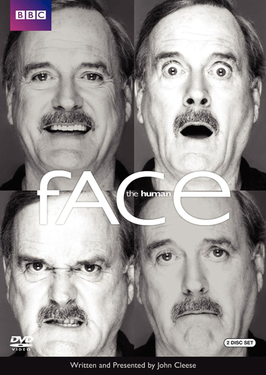The Human Face
The Human Face is a central aspect of human anatomy with significant implications in culture, psychology, and social interaction. It consists of the front part of the head, extending from the forehead to the chin and from ear to ear. The face houses multiple sensory organs, including the eyes, nose, and mouth, which play crucial roles in various sensory functions such as vision, smell, and taste, respectively.
Structure[edit | edit source]
The structure of the human face is complex, comprising several layers including the skin, muscles, nerves, and bones. The facial skeleton is primarily made up of fourteen bones, with the mandible (lower jaw) being the only movable bone. The facial muscles are important for expressing emotions through facial expressions and for functions such as chewing and speaking.
Facial Features[edit | edit source]
- Eyes: The windows to the soul, they play a pivotal role in non-verbal communication and facial recognition.
- Nose: Involved in the sense of smell and also affects the voice's resonant qualities.
- Mouth: Essential for speech, eating, and displaying emotions.
- Ears: Although not often included in discussions of facial aesthetics, they are crucial for hearing and balance.
Function[edit | edit source]
The human face has several functions, ranging from the basic biological to complex social interactions. It is vital for sensory perception, including taste, smell, sight, and hearing. The face also plays a crucial role in communication, both through verbal means and non-verbal cues such as expressions which convey emotions and reactions.
Facial Expression[edit | edit source]
Facial expressions are a form of non-verbal communication that can convey a wide range of emotions without the need for words. The human face can make numerous expressions by contracting or relaxing facial muscles. These expressions are universal across cultures, indicating emotions such as happiness, sadness, anger, and surprise.
Cultural Significance[edit | edit source]
The human face also has a profound cultural significance. It is often the focus of aesthetic and beauty standards, which can vary greatly across different cultures and historical periods. In many cultures, certain facial features are considered more desirable, influencing social perceptions and even personal identity.
Development[edit | edit source]
Facial development begins in the womb, with the face forming through a complex process of embryonic development. This process involves the growth and fusion of various facial structures, which can sometimes lead to congenital anomalies such as cleft lip or cleft palate.
Aging[edit | edit source]
The human face changes over time due to the aging process. These changes include the loss of skin elasticity, changes in fat distribution, and the development of wrinkles. Aging in the face is influenced by various factors, including genetics, lifestyle, and environmental exposures.
Facial Recognition[edit | edit source]
Facial recognition is a cognitive process by which humans identify or verify a person from a digital image or a video frame. It has applications in security, law enforcement, and social media. However, it also raises privacy and ethical concerns.
Search WikiMD
Ad.Tired of being Overweight? Try W8MD's physician weight loss program.
Semaglutide (Ozempic / Wegovy and Tirzepatide (Mounjaro / Zepbound) available.
Advertise on WikiMD
|
WikiMD's Wellness Encyclopedia |
| Let Food Be Thy Medicine Medicine Thy Food - Hippocrates |
Translate this page: - East Asian
中文,
日本,
한국어,
South Asian
हिन्दी,
தமிழ்,
తెలుగు,
Urdu,
ಕನ್ನಡ,
Southeast Asian
Indonesian,
Vietnamese,
Thai,
မြန်မာဘာသာ,
বাংলা
European
español,
Deutsch,
français,
Greek,
português do Brasil,
polski,
română,
русский,
Nederlands,
norsk,
svenska,
suomi,
Italian
Middle Eastern & African
عربى,
Turkish,
Persian,
Hebrew,
Afrikaans,
isiZulu,
Kiswahili,
Other
Bulgarian,
Hungarian,
Czech,
Swedish,
മലയാളം,
मराठी,
ਪੰਜਾਬੀ,
ગુજરાતી,
Portuguese,
Ukrainian
Medical Disclaimer: WikiMD is not a substitute for professional medical advice. The information on WikiMD is provided as an information resource only, may be incorrect, outdated or misleading, and is not to be used or relied on for any diagnostic or treatment purposes. Please consult your health care provider before making any healthcare decisions or for guidance about a specific medical condition. WikiMD expressly disclaims responsibility, and shall have no liability, for any damages, loss, injury, or liability whatsoever suffered as a result of your reliance on the information contained in this site. By visiting this site you agree to the foregoing terms and conditions, which may from time to time be changed or supplemented by WikiMD. If you do not agree to the foregoing terms and conditions, you should not enter or use this site. See full disclaimer.
Credits:Most images are courtesy of Wikimedia commons, and templates Wikipedia, licensed under CC BY SA or similar.
Contributors: Prab R. Tumpati, MD

